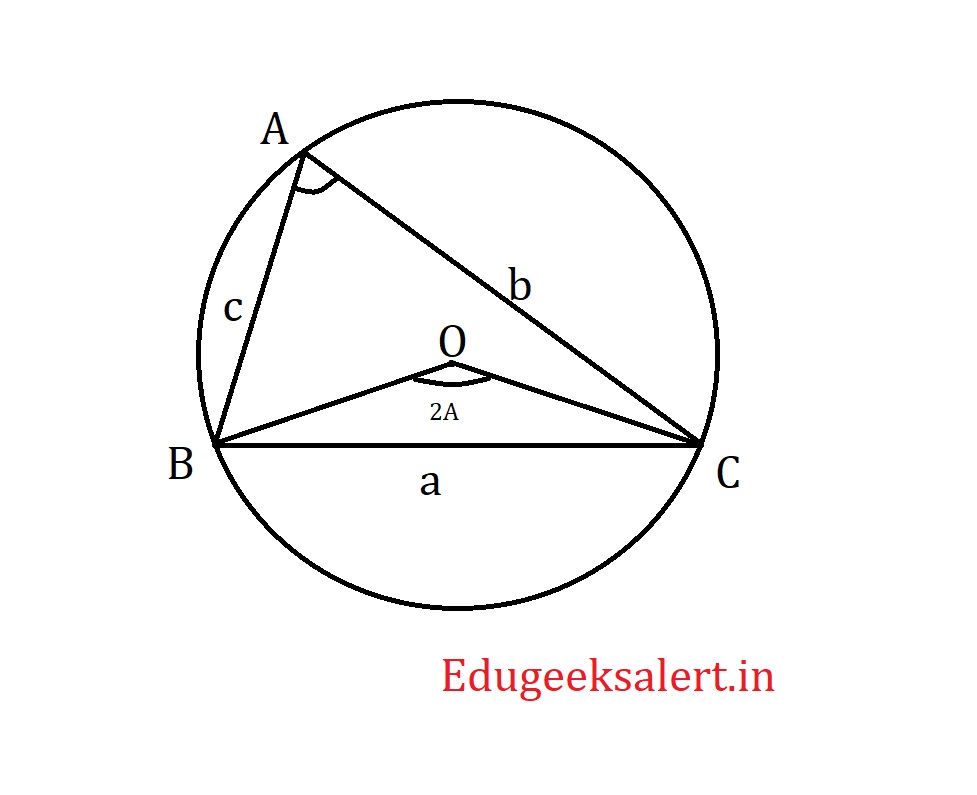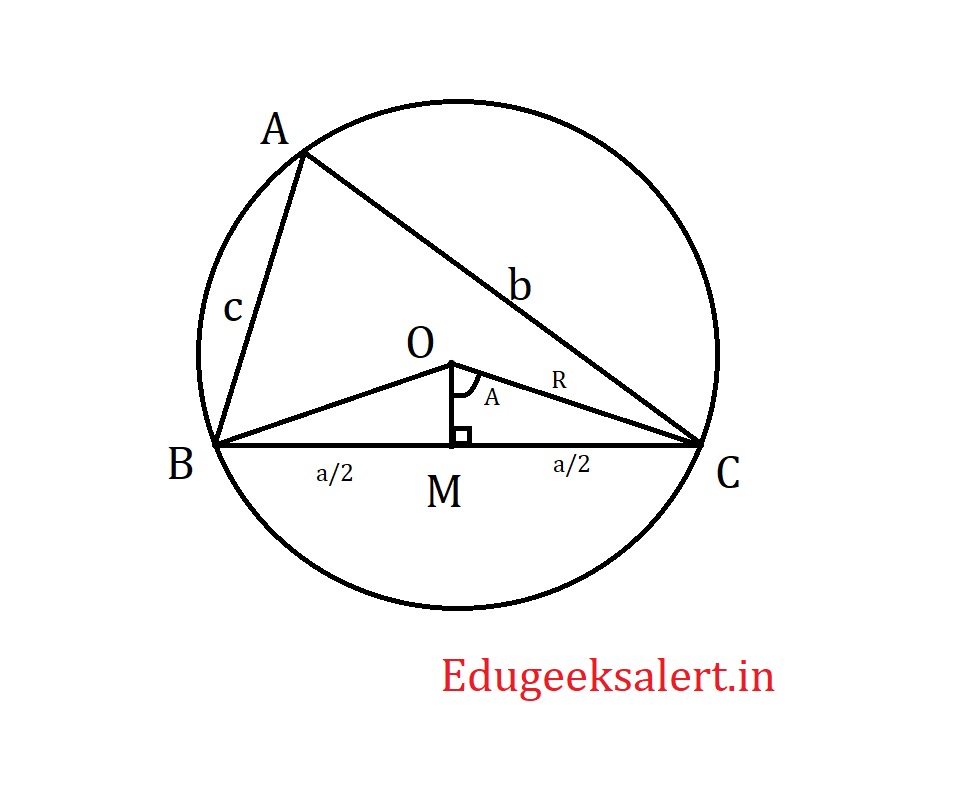Table of Contents
Sine rule or Laws of sine
Statement: In a $\triangle$ ABC with a, b and c are the lengths of sides BC, CA and AB respectively then
$$\frac{a}{Sin A}=\frac{b}{Sin B}=\frac{c}{Sin C}= 2R$$
Where R is the circum radius of the $\triangle$ ABC.
Therefore, $$a= 2R\ Sin\ A, b= 2R\ sin\ B, c= 2R\ sin\ C$$
Proof: Let’s consider the $\triangle$ ABC as shown in the figure circumscribed. O is the circum centre.
We know that a, b and c are lengths of sides of $\triangle$ ABC and R is the circum radius.

From the diagram we can see that BC is the chord of the circle. From circle properties we know that
$$\angle BOC = 2A$$
Let’s draw altitude to OM in $\triangle$OBC perpendicular to side BC. As OB and OC are also radii of the circle we can understand that $\triangle$OBC is an isosceles triangle. In an isosceles triangle altitude and median coincides. Therefore OM is not just altitude but also median. Therefore BM =$\frac{a}{2}$

Now let’s consider $\triangle$ OMB, since OBC is isosceles OM bisects $\angle$ BOC. And $\angle$ OMB =$90^0$
$$sin \ \angle BOM = \frac{MB}{OB}$$
$$sin \ A= \frac{a}{2R}$$
$$a=2R\ sin\ A$$
Similarly we can prove that c = 2R sin C and b= 2R sin B.
And we can write
$$\frac{a}{Sin A}=\frac{b}{Sin B}=\frac{c}{Sin C}= 2R$$
Feedback
Was this page helpful?
Glad to hear it! Please tell us how we can improve.
Sorry to hear that. Please tell us how we can improve.